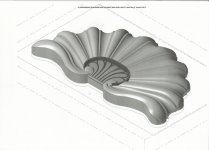Rbpercussion
Aluminum
- Joined
- Jan 27, 2015
Among one of my previous threads I asked the question of why we use solids. I was given some good answers, but among them was a comment that it was superior to surface creation. I'm encountering more surface generation in the programs at my current shop and am wondering whether there is a distinction between the two.
the comment made it seem that surfaces were of an antiquated cam age and that solids are the wave of the future. Is this true? Why would one opt to use solids over surfaces?
I have minimal experience with either but the little I do has made solid generation seem like an easier task-once you know a few solid commands you can get farther in geometry creation than if you knew just a few surface commands.
What is your insight into this? Do you prefer surfaces or solids?
the comment made it seem that surfaces were of an antiquated cam age and that solids are the wave of the future. Is this true? Why would one opt to use solids over surfaces?
I have minimal experience with either but the little I do has made solid generation seem like an easier task-once you know a few solid commands you can get farther in geometry creation than if you knew just a few surface commands.
What is your insight into this? Do you prefer surfaces or solids?





